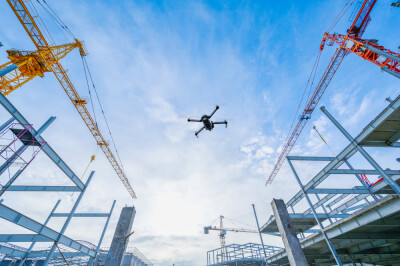Federal Aviation Administration (FAA) Administrator Michael Huerta announced the creation of the Drone Advisory Committee (DAC) in May 2016. The general idea behind this multidisciplinary committee was to provide an open venue for the FAA and the UAV community stakeholders to work in partnership identifying and recommending a single, consensus-based set of resolutions for the safe and efficient integration of unmanned aircraft into the National Airspace System.
The DAC includes executives who represent a wide array of interests including: unmanned aircraft manufacturers and operators, academia, traditional aviation groups, airport operators, labor organizations, radio and navigation equipment manufacturers, and state / local government officials. The DAC also provides the agency with recommendations that may be used for short and long-term strategic planning.
The committee met for the second time on January 31 in Reno, Nevada and during the meeting, members focused on basically three distinctive tasks:
- Roles and responsibilities of federal, state, and local governments in regulating and enforcing drone laws.
- Technological and regulatory instruments that would allow drone operators to gain access to the airspace beyond current allowances under the Small UAS Rule.
- Funding to offset the cost of supporting unmanned aircraft integration into the nation’s airspace.
During the meeting two task groups were created, TG1 and TG2 with the mandate to analyze “Roles and Responsibilities” and “Technological and Regulatory”, respectively. These groups met separately, under the leadership of Victoria B. Wassmer, FAA Deputy Administrator, and presented a series of recommendations to the FAA on how to move forward on their respective tasks.
TG1, with the mandate to study the different roles and responsibilities of federal, state and local jurisdictions over the integration of our airspace, focused mainly on legal issues. A series of legal precedents were brought to the table and the discussion began. Currently federal statutory and regulatory rules do not allow state and local governments to regulate aircraft flight operations or safety and efficient use of airspace, directly or indirectly.
This was a particularly contentious issue, given the concerns at the city and county level about privacy and safety of people on the ground. A fine legal line that has to be studied and legislated before UAVs are allowed to share the airspace with manned aircraft over controlled airspace.
TG2 dealt with the less contentious issue of the technological aspects of this inevitable integration. A series of needs were indentified in terms of mandatory equipment, both on the ground (fixed infrastructure) and on the UAV. This task group will be seeking input, over the next few months, from industry regarding advances in detect-and-avoid technology and any other new mechanism that would ensure the safe sharing of the airspace.
With regards to the third task, “Funding”, the FAA received the DAC’s feedback and will finalize concrete recommendations over the coming weeks. The third tasking statement was not available at the time of this writing. The next DAC meeting will be held on May 3 in Washington, DC.
With these regular meetings the FAA and the UAV industry stakeholders are demonstrating a clear intention to have a common set of rules and a solid technological background to allow the safe integration of manned and unmanned vehicles in the short term.















Comments